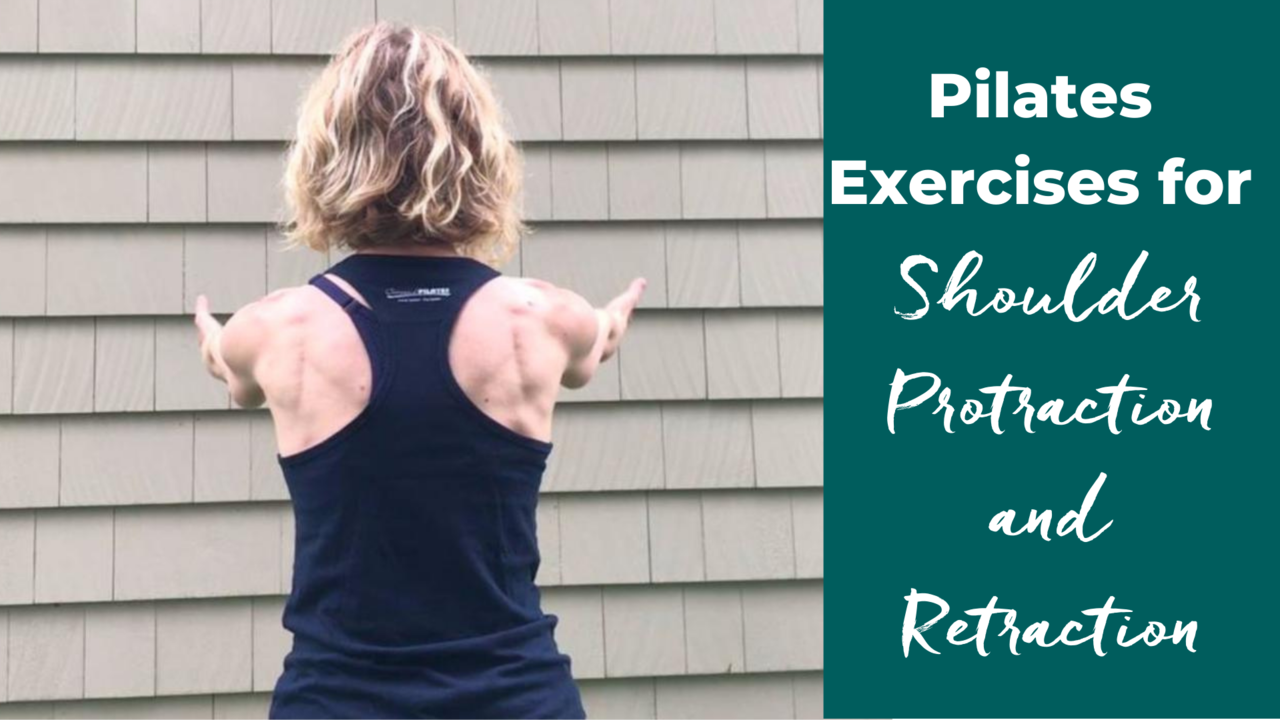
Pilates Exercises for Shoulder Protraction and Retraction
Jul 03, 2019Your shoulder blades need to be able to move apart (protraction) and towards each other (retraction).
The muscles required for protraction are your serratus anterior, the ones responsible for retraction are your rhomboids and middle trapezius.
Some of us tend to either squeeze our scapulae too much and all the time (ehm, me, here!), and others don't have the strength to squeeze (kyphotic posture, where the upper back is overly rounded).
Since each of us has different patterns, we also need different cues. Isn't that confusing fun. Just the other day, I was teaching two students back to back and I gave each of them the exact opposite cue. One of them needed to "squeeze your shoulder blades" and the other one I had to remind to "keep space between your shoulder blades".
Related: The Cueing Cure: Dramatically Improve Your Verbal Cueing in 30-Days
What's easier for you? Squeezing the shoulder blades together or pulling the scapulae wide and around the rib cage? Once you know that, you can pick exercises that improve the opposite.
Laird Hamilton (surfer and writer for Outside Magazine) wrote this - which really stuck with me: "Train to your weaknesses, not your strengths." If we keep doing what we're already good at, then we'll get imbalanced. We can't neglect our weaknesses. We need to work on that to achieve our balanced muscle development, one of the main goals of any Pilates practice.
Here are a few exercises and cues for scapular protraction and retraction to get you started:
Chair
- Prone Scapular Series: (resisted) protraction - neutral - (assisted) retraction
Trapeze Table / Tower
- Supine Scapular Series: (assisted) protraction and (resisted) neutral
- Standing Arm Series Facing Out: Punching
Reformer
- Reverse Abdominals: lift out of your shoulders; wrap your shoulder blades around your rib cage
Mat
- Push-ups with legs on stability ball
Ladder Barrel
- Horseback with Magic Circle
To see even more exercises for shoulder protraction and retraction as well as videos and detailed instructions of each exercise, check out the Pilates Protocols chapter of the Pilates Encyclopedia.

Get support with your day-to-day teaching challenges
Ready to Teach Pilates with Clarity and Confidence?
Sign up to receive my weekly email newsletter. It's jam-packed with Pilates articles, videos, exercise tutorials and teaching tips.
Only super valuable stuff here. No spam ever. Unsubscribe any time.












